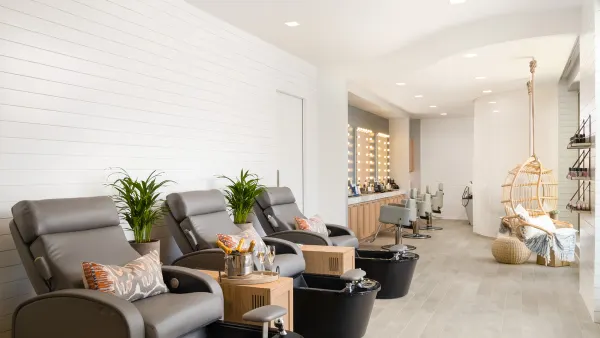Hotel Tech-in is our regular feature that takes a closer look at emerging technology in the hospitality industry.
Viewing renderings and taking virtual walk-throughs of hotel event spaces have been a go-to way for event planners to source venues for years. But the COVID-19 pandemic shone a spotlight on their importance, as in-person tours were temporarily halted.
Since that time, innovation in the space has accelerated, with virtual event maps becoming more complex, customizable and detailed. More recently, they’ve gone 3D.
“We've heard from our planner sourcing reports that floor plans and diagrams and 3D virtual tours are increasingly important,” Janine Alsalam, vice president of sales, Hospitality Cloud at Cvent, told Hotel Dive. “They're among the top elements that are helping them make their decisions for which venues to source.”
In a bid to evolve its event map offerings, Cvent acquired Prismm, a platform that offers 3D layouts of venues, in April. Terms of the deal were not disclosed. Following the deal, Cvent has been integrating Prismm’s technology into its event-mapping platform, accelerating the push to 3D diagramming.
“We've been doing a lot of learning about the best and greatest of both [Cvent’s and Prismm’s] platforms, and our vision is to bring those together into a combined solution that really meets the market need,” Alsalam said.
Hotel Dive spoke to Alsalam about why the company was drawn to Prismm’s offerings, next steps for the technology’s integration and the future of event mapping hotel venues.
Event mappers join forces
Prismm, which was founded in 2014 under the name Allseated, first launched its 3D layout tool in 2018, updating it later with augmented- and virtual-reality capabilities.
Alsalam said 3D visualization is the biggest change to occur in the event-mapping space in years.
“3D in general has taken flight,” she said. “It was already developing in terms [of becoming a] better technology [with] more expectations for it, but then the pandemic accelerated that quite a bit.”
Prismm creates its virtual walk-throughs by sending a team of photographers to a venue to capture it using Matterport 3D cameras. The resulting maps not only show the venues as they are, but also allow users such as event planners to insert 3D models of objects into the floor plan, which Alsalam said is useful for event design as well as for “creating a visual showcase of your sample layouts for [a hotel’s] sales and marketing team.”
Cvent had already been working behind the scenes to improve its own event-mapping technology, which also included virtual walk-throughs of floor plans, Alsalam shared, but the company targeted Prismm for an acquisition because “we had two different ways to accomplish a similar goal, which is helping planners and venues visualize the space.”
Post-combination, Cvent and Prismm have more than 12,000 customers of their diagramming tool globally, Alsalam said, adding that venues that display virtual tours on Cvent’s networks get approximately 2.5% more leads than those that don’t.
Supplementing, not replacing
Alsalam said 3D mapping is supplementing in-person site visits — not replacing them. According to Alsalam, event planners say having instant access to a 3D model is helpful throughout the planning process and not just when they’re selecting a hotel partner.
At the same time, virtual models can reduce an event’s environmental impact if fewer people are needed to travel to a site. “Many companies are trying to lower their carbon footprint and avoid site visits for smaller meetings,” Alsalam noted.
With Prismm under Cvent's umbrella, there are further ways to integrate the companies' products. Alsalam said Cvent is considering flexible pricing that allows for a higher-priced premium offering and a less expensive version.
Cvent also plans on integrating Prismm’s collaborative features, which give everyone from venue operators to planners and catering teams access to adjust floor plans.
“From a venue side, you want to make sure that you're giving those planners the tools to really design an event that you're going to be able to execute on-site,” Alsalam said. “A lot of times, the planner is owning the design. In other cases, it’s the venue that's owning the design.
“We're leaning really heavily into that collaborative nature of the product,” Alsalam said.










